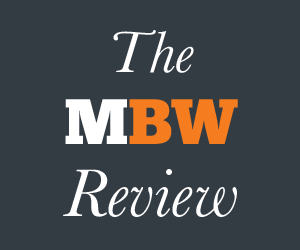
The MBW Review offers our take on some of the music biz’s biggest recent goings-on. This time, we continue to mull over the industry’s global ‘A&R’ spend – and why emerging artists are becoming bigger news in the industry. The MBW Review is supported by Instrumental.
It’s always an interesting debate within record labels: with all the resources dedicated to ‘frontline’ A&R in the music business, how much is new music actually worth versus catalog material – i.e. the stuff that’s already been recorded, and is already popular?
Last month we discovered, via the IFPI, that global record company A&R expenditure – the money that goes on signing an act, then recording and mastering their music – has greatly escalated in recent years. According to the data, record labels spent $4.1bn on ‘A&R’ in 2017, significantly more than the equivalent figure in both 2015 ($2.8bn) and 2013 ($2.5bn).
This isn’t the only eye-popping stat about A&R to arrive from the record industry of late. An RIAA-backed report, published earlier this year, showed that US-based major labels signed a total of 658 acts in 2017, up 12% on the same figure from 2014.
It’s worth pausing on that number for a second: six hundred and fifty eight. It means record companies in the States are signing close to two new artists, on average, every single day.
And, remember, this is a stat from two years ago. Since then, new frontline major label entities like Warner‘s Elektra Music Group and Sony’s revived Arista have emerged to further heighten competition for new artists.
So, back to that question: how much is ‘new’ music really worth in these early stages of the streaming-led worldwide record industry, which Goldman Sachs expects to double in size by 2030?
On the one hand, the streaming age is still, depending on your definitions, dominated by catalog releases.
According to annual data from BuzzAngle/Alpha, ‘Deep Catalog’ music – ie. records that were released three or more years after the user listened to them – racked up 254.4bn plays in the US last year on on-demand streaming services.
‘New’ music – defined as tracks that were released eight or fewer weeks before they reached the listeners’ ears – pulled in 65.2bn streams in the US last year, close to a quarter of the size of the play-count of ‘Deep Catalog’.

But you shouldn’t necessarily let these statistics dissuade you from the potential power of ‘new’ music in the modern industry.
For one thing, naturally, ‘new’ records quickly become ‘catalog’, at least of some description, with the old adage being that only the true classics of today will be played and cherished in abundance by the audiences of tomorrow.
This next bit is interesting, then.
“music which is less than three years old gets more plays on interactive audio streaming services in the United States than all music which is over three years old.”
In Buzzangle/Alpha’s definition, any music released three years prior to the listener pressing play, or sooner, is not counted as ‘Deep Catalog’. Instead, music released sooner than three years (156 weeks) ago is given one of three definitions: (i) ‘Catalog’ is music released between 78 weeks and 156 weeks before the user pressed play; (ii) ‘Recent’ music is anything released between 8 weeks and 78 weeks prior to the same event; and ‘New’ music, as already covered, was released eight weeks ago or sooner.
These three categories, combined, have attracted the majority of audio streaming plays in the US in each of the past three years. In other words: music which is less than three years old gets more plays on interactive audio streaming services in the United States than all music which is over three years old.
Perhaps the most significant trend related to this fact? It’s only becoming more true.

In the above chart, again based on BuzzAngle/Alpha annual data, you can see how ‘New’, ‘Recent’, ‘Catalog’ and ‘Deep Catalog’ music performed as a percentage of total plays on interactive audio streaming services in the States each year.
The big takeaway? Every one of these categories lost share between 2016-2018… except ‘New’ music, which gained 3.7% share of all annual streams. ‘Deep Catalog’, meanwhile, lost 2.4% share.
One flawed but obvious reaction to this is to suggest that ‘New’ music will naturally grow its share in the modern day because of the mass of tracks – nearly 40,000 a day – being uploaded to Spotify et al in the streaming era. Yet this neglects to explain why ‘Recent’ music – that which is over eight weeks old, but less than 78 weeks old – has ceded share in the chart above.
The majority of the money on streaming services, then, might remain stuck in the past – but streaming consumers are increasingly making time to listen to the music of now.






